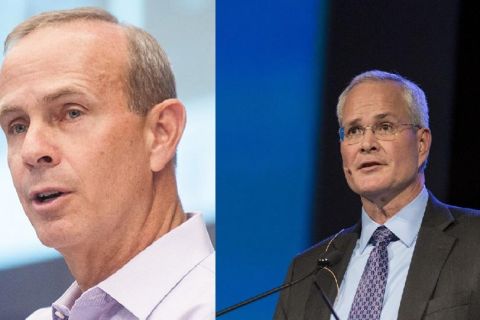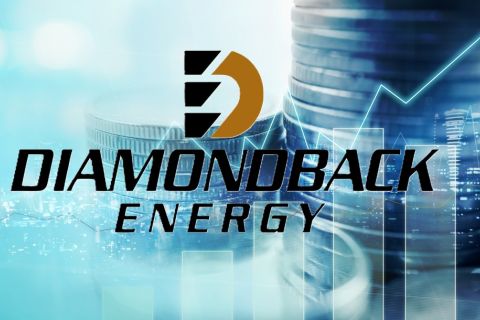Throughout 2017, discussions on poor MLP market performance were paired with discussions on balance sheet stability and conservative financial measures. While some MLPs did cut their famous distributions, most continued to raise them.
However, given that Wall Street did not see fit to reward such previously-acclaimed moves, some MLP management teams have begun to explore a different track.
The traditional MLP financing model involves raising debt and equity for each new project because all cash flows after maintenance and other expenses are paid out to investors in the form of distributions. However, there is nothing magic about the cash MLPs received; they’re not legally mandated to pay out a certain portion of cash flows like other structures, such as real estate investment trusts.
Thoughtful management teams have begun to search for the largest return on that cash.
Enterprise Products Partners LP (EPD) announced in October that it would continue to raise its distribution, but instead of an increase of two cents per year, it would only increase distributions by one cent per year. Its coverage ratio is now 1.2x and, in the future, they plan to grow using retained earnings, not the capital markets. There was even talk about a 2019 buyback.
This move surprised investors, leading to increased volatility across the space, as EPD is known as a leader in the industry. This move toward self-funding essentially disables the simplistic, yield-based valuation shortcut still so prominent in the space.
Total return, once driven by distribution growth, may now be predominantly based on price appreciation. Given that so much of 2017’s performance was driven by negative market sentiment, not fundamentals, this is one way to force investors to look instead at the company’s actual performance.
Buckeye Partners LP also announced a similar intention. Because “the market is not adequately rewarding consistent distribution growth,” it would maintain distributions instead of growing them.
But not all MLPs needed such fanfare. Magellan Midstream Partners LP (MMP) has been quietly growing under this paradigm for years. While maintaining a healthy distribution coverage ratio, MMP has not raised equity since 2010 and yet it has continued to pursue growth projects and maintained a double-digit distribution growth rate. The proof could already be in the pudding: MMP’s stock trades at a 5.3% yield.
Any nascent trend is indistinguishable from coincidence or anomaly, and self-funding is not yet widespread or known to be successful. Energy Transfer Partners, with its recent 2.7% quarter-over-quarter distribution increase, seemed to announce an intention to maintain the traditional model —at least for now. Unfortunately, investors remain unconvinced as to the best way for any company to proceed, and Energy Transfer traded up only modestly since the late-October announcement.
A word of caution: Some MLPs could return less cash to investors not because they see better uses for it elsewhere, but instead because the cash is simply not there. Those interested in pursuing investments in individual MLPs should continue to investigate company-level metrics. There will never be a short cut that can replace good research.
Self-funding could prove successful, both in terms of funding growth projects and in the market with unit price appreciation. If that happens, the space will evolve, just as it did when MLPs began lowering their cost of capital by eliminating incentive distribution rights and general partnership ownership structures. That was another move that provoked increased volatility and short-term pain for long-term success. Until investors reach consensus on self-funding, however, volatility will continue.
Maria Halmo is the director of research at Alerian, an independent provider of MLP and energy infrastructure market intelligence. As of November 2017, over $15 billion is directly tied to the Alerian Index Series. For additional commentary and research, please visit www.alerian.com/alerian-insights.
Recommended Reading
Exxon, Chevron Tapping Permian for Output Growth in ‘24
2024-02-02 - Exxon Mobil and Chevron plan to tap West Texas and New Mexico for oil and gas production growth in 2024, the U.S. majors reported in their latest earnings.
Hess Corp. Boosts Bakken Output, Drilling Ahead of Chevron Merger
2024-01-31 - Hess Corp. increased its drilling activity and output from the Bakken play of North Dakota during the fourth quarter, the E&P reported in its latest earnings.
Petrie Partners: A Small Wonder
2024-02-01 - Petrie Partners may not be the biggest or flashiest investment bank on the block, but after over two decades, its executives have been around the block more than most.
CEO: Magnolia Hunting Giddings Bolt-ons that ‘Pack a Punch’ in ‘24
2024-02-16 - Magnolia Oil & Gas plans to boost production volumes in the single digits this year, with the majority of the growth coming from the Giddings Field.
Endeavor Integration Brings Capital Efficiency, Durability to Diamondback
2024-02-22 - The combined Diamondback-Endeavor deal is expected to realize $3 billion in synergies and have 12 years of sub-$40/bbl breakeven inventory.





